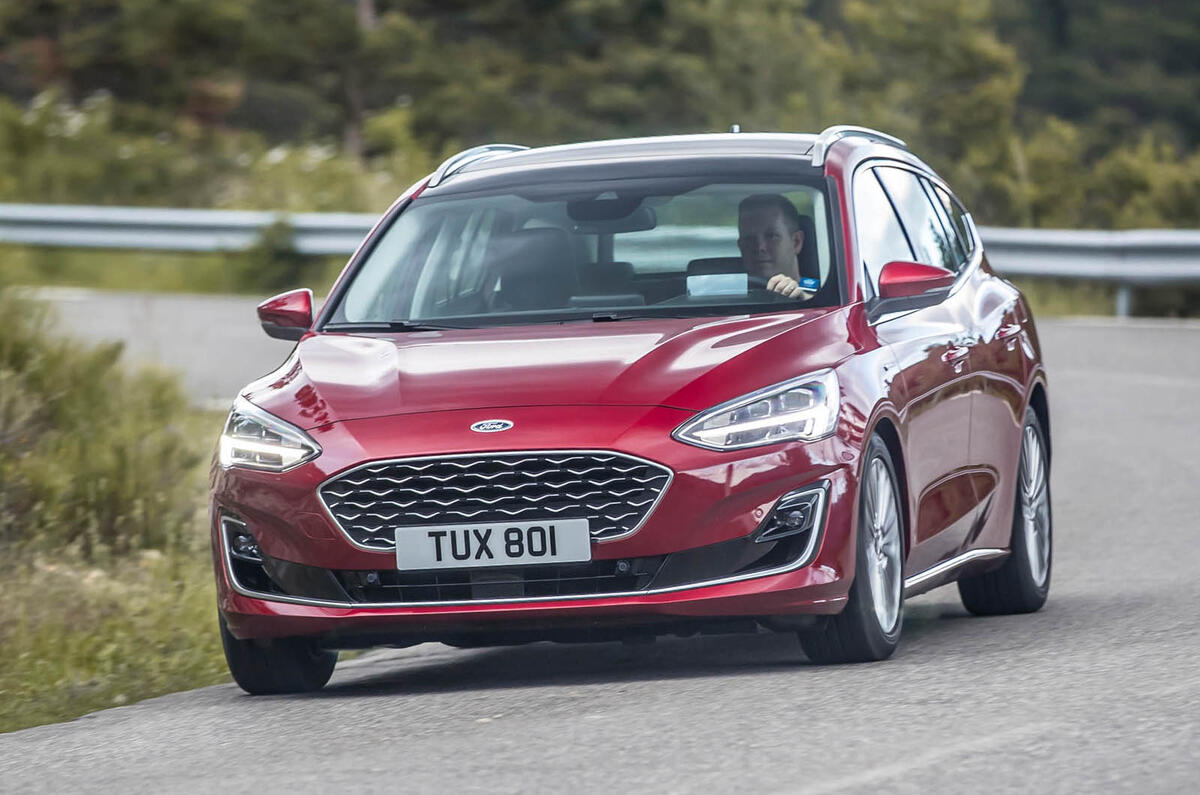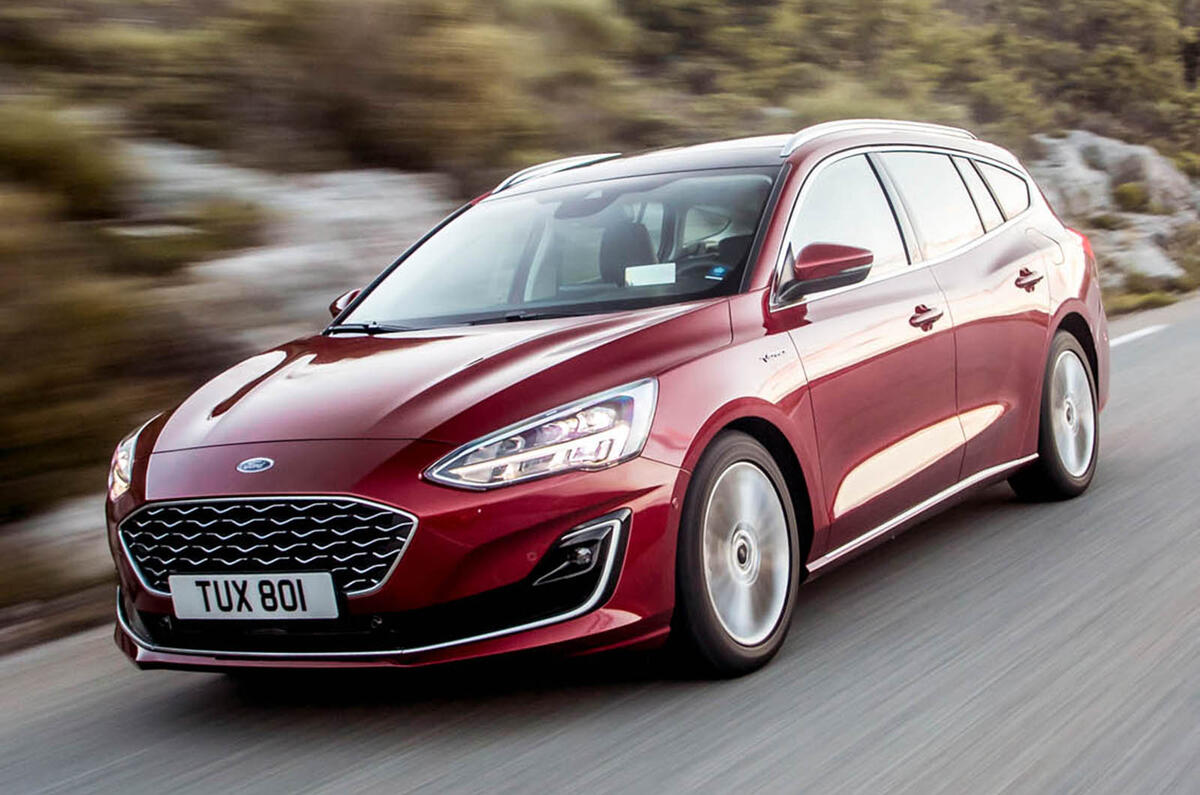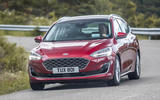What is it?
This is our chance to get to know the margins of the model range of the fourth-generation Ford Focus.
We’ve driven the regular five-door hatchback version in a few forms earlier this year, but this is our first occasion to try both the estate bodystyle (which is expected to account for 12% of UK Focus sales) and Ford’s top-of-the-range Vignale trim level (which is expected to represent just under 10% of the UK trim level mix).
Although it shares the same wheelbase as the hatchback, the new Focus Estate is significantly longer than the old one, stretching close to 4.7 metres overall, with a rear overhang almost a foot longer than that of the five-door and a boot swollen to 608 litres in five-seat mode (up from 375 litres in the hatchback). Fold the back seats and you can squeeze in 1653 litres of stuff if you load to the roof, while all the usual wagon accoutrements – partition guards, roof boxes, tow bars, you name it – are in Ford’s dealer-fit accessories catalogue.
Vignale trim level, meanwhile, is mostly but not entirely about extra equipment (Focus Vignales also get special grille and bumper styling). There are no meaningful mechanical differences that the badge confers; you get the same suspension tuning as you would otherwise on a mid-range car, with the option of adaptive damping (continuously controlled, as Ford describes it) as long as you’re buying a five-door hatchback without a variable-height boot floor and with either a 1.5-litre turbo petrol or 2.0-litre turbo diesel engine.
Standard equipment over and above that of the next-highest Focus trim level includes items like 18in alloy wheels, a heated steering wheel, a premium audio system, LED headlights, a head-up display, leather seats and LED ambient lighting. That’s not quite the kitchen sink where kit is concerned; you can pay extra still for a panoramic sunroof and wireless phone charging and for active safety and convenience kit, such as a blindspot monitoring system, traffic sign recognition and adaptive cruise control, if you want to.
Given the RRP on the priciest Vignale wagon is above £30,000 before optional extras, however, you might not be minded to tick too many boxes on the order form. The typical premium for a Focus Vignale is £2650 beyond asking price on Titanium X. And a Focus Titanium X isn’t so cheap by mainstream hatchback standards.




























































Join the debate
Add your comment
one thing i really hate, are
one thing i really hate, are people that havent even driven one. if you know where to go you can get one with all the extras for £23,000.
unless you have actually driven one you cant give a review on the car.
get a life people
Lazy lazy lazy
When a manufacturer builds a coupé, they make considerable changes to the styling above the waist. When they build the estate, they say "Well it still needs four doors so lets just save costs by extending the styling of the saloon. Yeah that results in useless pinched windows and a droopy top window line that gets separated from the roofline but the punters just look at the kit and I can't be arsed anyway."
Just look at it no2!
Its pretty ungainly from the side profile isnt it? Huge front overhangs, tapering waistline, chunky rear overhang. No wonder everyone is buying compact SUVs instead!